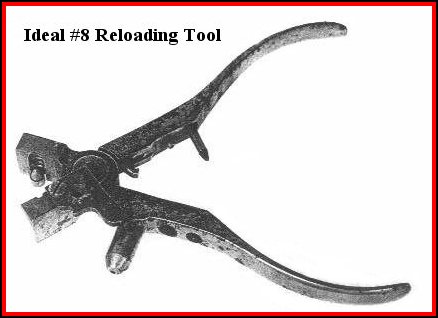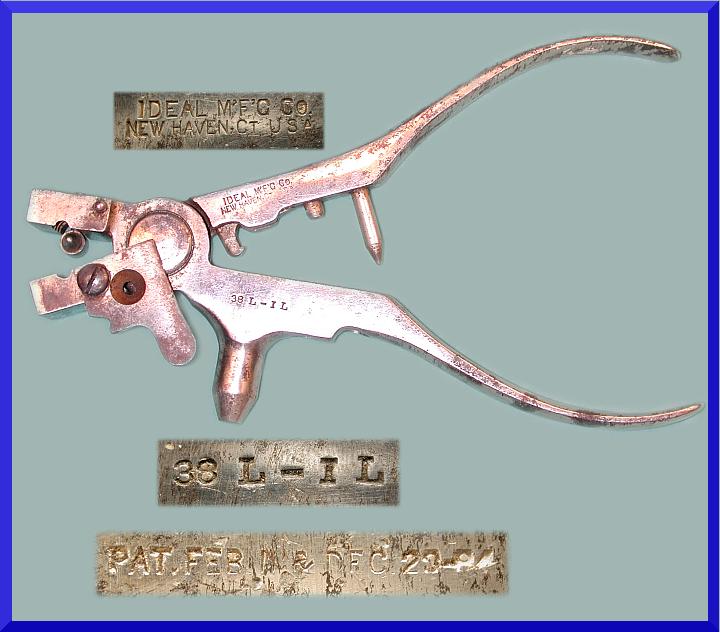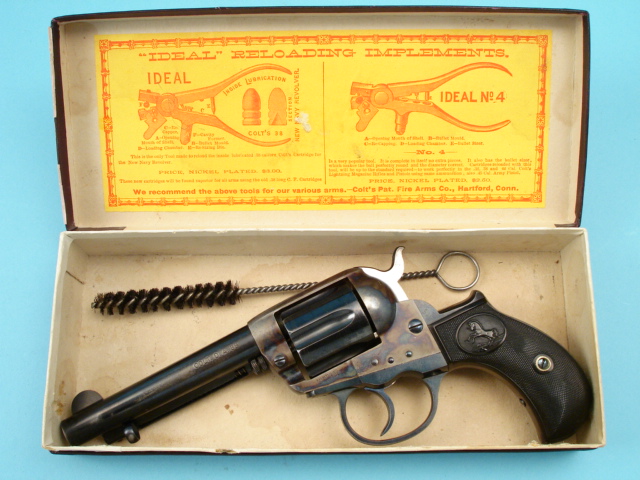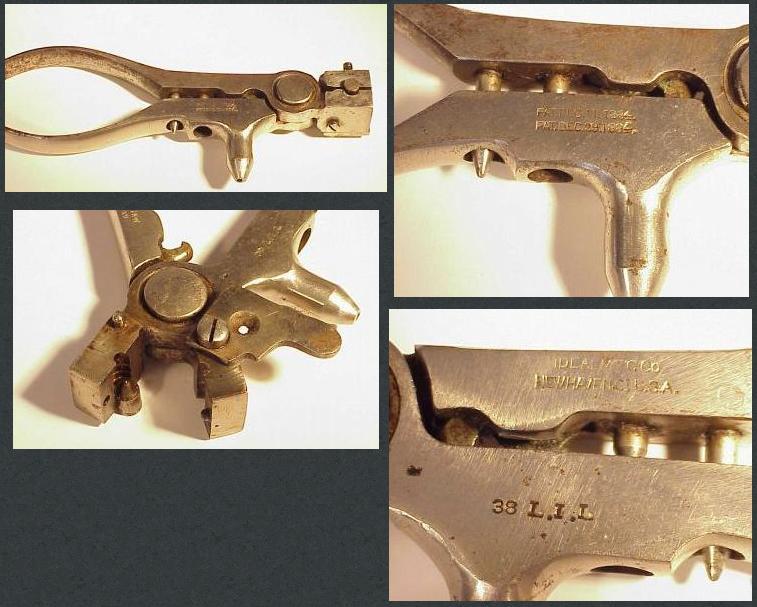|

The #8 tool was initially designed for .38
Long cartridges. It was later manufactured for other cartridges
such as the .32 L I L (Long Inside Lubricated) to .455 British.
Some are found with an "O" instead of an "I", meaning Long Outside
Lubricated.
The tool was used for cartridges made with a
hollow base bullet that had the same diameter as the casing. Many
early cartridges (rim & centerfire) were made with bullets of this
type. A good example today of such a cartridge is the .22
rimfire. In them, the base of the bullet has a reduced diameter,
known as the "heel" of the bullet. It fits into the mouth of the
cartridge case. The original problem was that these cartridges
tended to have lubrication on the entire bullet, rather than in the
grooves at the mouth of the casing (where it was supposed to be).
A way was discovered to seat a bullet into a
case with the mouth covering the lubricated grooves, that would still
fill the bore when fired. It was accomplished by copying the
"Minie Ball", used during the Civil War.
The ball got its name from its inventor,
Captain Claude Miniť of the French Army. It was conical in shape
and made of soft lead, with two or three grease grooves around its
body. The cylinder/conical ball usually had a cavity. Upon
firing, the hot gases produced by the burning black powder charge
expanded into the hollow base of the ball, forcing the soft lead into
the rifling grooves inside the barrel of the musket. These
grooves, which spiralled as they traveled the length of the barrel,
imparted a spin to the ball, making its range an incredible 1500 yards,
with extreme accuracy at 350 yards or less. The majority of Civil
War cartridges consisted of the Miniť ball and 60 grains of black
powder enclosed in a paper cylinder.
On February 10, 1891 Ideals founder John
Barlow patented a system for casting hollow based bullets into the #8
tool. Lead was poured into the nose-end, instead of the base, and
a plug built into the tool produced the hollow base.
Here is an example of the first variation
Ideal #8 tool. This one is marked 38 L-IL
- Overall length of 8 1/4"
- Hollow base bullet mold
- Recapper in the handle
- Special bullet sizing pin with pointed end
- Non-adjustable bullet seater
- Offered in pistol calibers
- Produced 1890 to 1902

Here is an example of
Colt Model 1877, .38 caliber in it's original box showing the Ideal #8
and #4 tools.


|